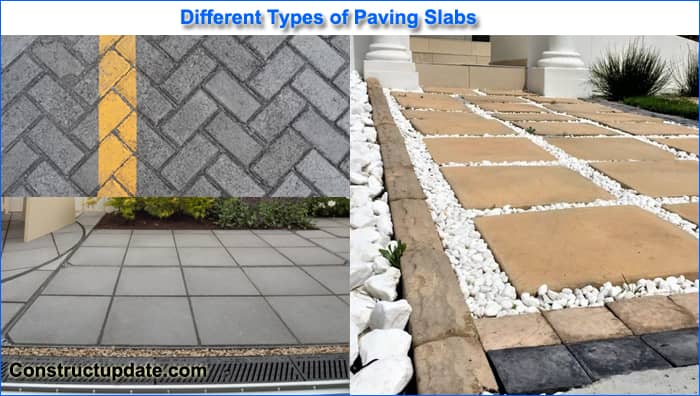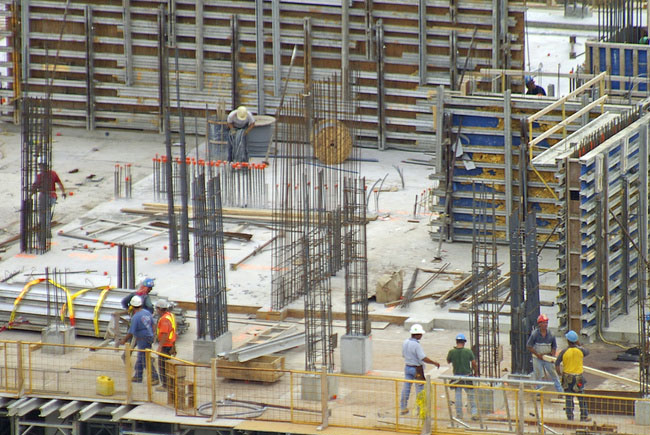What are Paving Slabs | 6 Different Types of Paving Slabs
A paving slab is a straight piece of rock that is used for paving purposes. It is not a straightforward concept because each paving slab has advantages and disadvantages of its own.
Both indoor and outdoor surfaces can be covered with a variety of paving slab kinds. Paving slabs can be made from a variety of natural materials, including sandstone, limestone, or bluestone. Slate, granite, and marble are additional materials used for paving slabs.
The choice of the proper paving material is crucial to every paving project, no matter how big or small. Indian sandstone, limestone, quartzite, granite, and porcelain are a few of the most popular materials in this group. If you work as an architect, garden paver, building contractor, or even a builder, you must have a thorough understanding of these common paving options so that you and your client can decide which paving slab is best for them.
This overview will teach you about several paving slab types and describe their advantages and disadvantages to give you a general notion of what to choose from among them.

1. Natural Stone Paving
Although there are many other types of stone available, we feel that natural stone is the best option when choosing what to work with. It has been used for thousands of years to construct many of the modern wonders of the globe.
If it is of high quality, it lasts for YEARS and will almost definitely last even longer.
It is extremely challenging to manually and visually reproduce the colours in natural stone because they were created by the earth rather than by a human-made method.
For a number of reasons, natural stone is frequently seen as being better than concrete.
- It gets more beautiful with age.
- The hues are more subdued and varied.
- more resistant to freezing than concrete.
- Cleaner is simpler.
- More expensive and even increase the value of a house.
No two pieces of stone will be identical because they were all uniquely produced beneath the layers of earth. Technically, every project will be unique because each piece has its own distinctive layered patterns and veining.
Unexpectedly, the production of concrete is significantly more environmentally damaging than the process of extracting natural stone.
Very high temperatures are used during the formation process of concrete, which releases a lot of CO2 into the environment. Thus, natural stone may be preferred by individuals who care about the environment.
The following 4 varieties of natural stone are always in stock:
- Sandstone Paving
- Slate Paving
- Limestone Paving
- Granite Paving
2. Indian Sandstone Paving Slabs
The most popular imported material on the market today is without a doubt this classic substance. Due to their enormous variety of colours, smooth surface, and widespread availability, Indian sandstone paving slabs are occasionally referred to as “riven paving slabs” and continue to be a most sought-after building material.
Sandstones are made up of minuscule grains that are kept together by a cementitious substance that typically contains silicon. Its silicon-based “cement” controls a material’s resilience.
Sandstone may be a highly hard stone since silicon is a tough substance. That has everything to do with how closely these silicon molecules are clustered.
The substance becomes harder the more tightly they are packed. For instance, Raj Green sandstone is extremely durable due to its closely packed molecules. While rainbow sandstone is more colourful because you can see the layers, the strata are not as closely packed as they are in other types of rock. Because of this, working with rainbow natural sandstone is easier. Sandstone is long-lasting and resilient despite variations in colour and makeup caused by the silicon “cement,” which can be any colour. The slabs’ wide variety of colours, from grey to vivid red, is the result.
Pros
- With each individual slab, there are strong colour patterns and designs.
- Large selection of colours and styles.
- Broad accessibility.
- It is simple to cut and lay with.
- Will endure inclement weather and icy situations.
- It’s not too difficult to remove dirt.
- Adds value to a house while lasting a lifetime.
Cons
- If not taken care of owing to severe weather, can fade over time.
- Although the surface is entirely natural, it occasionally has a little too much surface roughness.
- Moreover, occasionally unfavourable natural variances like spots and other flaws can be seen in natural stone.
3. Limestone Paving Slabs
A limestone paving slab is one of the best types of paving slabs you can buy since it is beautiful to look at, attractive to look at, high-quality, and long-lasting.
While they resemble Indian stone paving slabs, limestone paving slabs are made of a mixture of silicon and lime.
Cons of Limestone Paving Slabs
Easy to slot and perform.
Durable and able to withstand various weather conditions.
It creates a spectacular stone and locates in the mixture’s resonant orbit.
Pros of Limestone Paving Slabs
The colour might soon fade.
Although it is less expensive than the Indiana stone paving slab, it is different in the collection.
Acid problems can disrupt daily life if they are not handled safely.
4. Slate Paving Slabs
Slate pavement slabs often have a soft and lovely colour palette. For instance, the colour “Riven Blue Slate” was produced underground over many centuries and is exceedingly difficult to replicate naturally. The stone’s faint blue tones really catch the eye. Even flaws in some slates can be appealing; layers of iron and copper colours in rustic slate ranges age the stone and are impossible to recreate by hand.
Compared to sandstone and limestone, slate is somewhat different. Whereas slate is a metamorphic stone developed in layers, both sandstone and limestone are sedimentary stones formed in grains.
The usage and characteristics of slate paving are affected by the aforementioned differential. When the minerals are compressed into parallel layers by the pressure of the movement of the earth’s crust, slate forms in flat sheets.
A crucial point to keep in mind is to always purchase calibrated slate because of the layers.
Pros and Cons of Slate Paving Slabs
Pros
- Unique colour and texture that doesn’t fade as quickly as limestone.
- When used as exterior flooring, very durable.
- Poor absorption rate prevents water from entering the pores, causing injury.
Cons
If you don’t get the correct equipment, it could be challenging to install.
If the weather has an impact, the layers may flake off, leaving pits where water can collect.
Usually vulnerable to moisture damage if ignored.
Slate is a great option all around. A stunning environment that really attracts the eye is effortlessly created by the colours and textures.
5. Granite Paving Slabs
Granite is a versatile stone that is utilised for various construction applications all over the world. It is the second hardest natural stone after diamond.
Granite paving slabs need to be your top option if you need paving that can withstand a lot of foot activity. One of the few naturally occurring pavers on the market is this one. Granite is resistant to water penetration and is durable as a result of this characteristic.
The best quality of granite paving slabs is its resistance to acids and chemicals. Granite is frequently used in applications that call for exceptional durability and good aesthetics.
Advantages of Granite Paving Slabs
- Cleaning is straightforward because of the feature of dust resistance.
- Additional colour and design choices
- Able to resist heavy traffic
- Granite pavement slabs are non-porous, thus water cannot damage the surface.
- Amazing weather resistance, this suggests extraordinary durability
Disadvantages of Granite Paving Slabs
- Because of its hardness, cutting is challenging.
- Installing these takes a lot of work.
- Because of their size, laying is labour-intensive.
6. Porcelain Paving Slabs
Only porcelain paving will be used in this section; all other stones are natural. We currently stock and sell solely outdoor porcelain paving, and this will likely continue indefinitely. Porcelain, on the other hand, we thought merited an exception.
It is definitely worth considering as an alternative because it addresses many of the drawbacks of natural stone that we have already mentioned.
By employing moulds and blazing clay at extremely high temperatures, outdoor porcelain tiles are created, producing identical slabs in the desired shape. These shaped tiles are covered in a veneer after they have dried completely to create texture and pattern. The pattern may be customised to seem like any design you can think of, including real stone or even deck boards with veneer!
Porcelain has the advantage of addressing several issues that natural stone can bring up. Porcelain is referred to as a very low-maintenance material since once it is installed, there isn’t much upkeep required.
Porcelain slabs have almost zero porosity, which means they won’t ever absorb stains or dirt. Even years after installation, washing down a porcelain patio should restore it to its original condition. Porcelain tiles are also highly durable and withstand the test of time. They are a true top-of-the-line solution because they are both scratch- and pressure-resistant.




